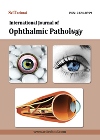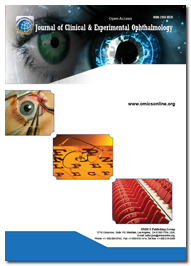Theme: Explore the Vision Spectrum of Scientific Eye
Ophthalmology Congress 2016
ConferenceSeries Ltd welcomes participants from all over the globe to attend Ophthalmology Congress 2016 during December 05-06, 2016 at Madrid, Spain which includes prompt keynote presentations, Oral talks, Poster presentations and Exhibitions.
Track 1: Retina &its Disorder
Retina is a layer of tissue in the back of your eye that senses light and sends images to your brain. The main organ in eye which is also the main part of Ophthalmological study is Retina. Many studies are going on this topic in the American academy of ophthalmology. In the centre of this nerve tissue is the macula. It provides the sharp, central vision needed for reading, driving and seeing fine detail. It processes light through a layer of photoreceptor cells. These are essentially light-sensitive cells, responsible for detecting qualities such as colour and light-intensity. Due to the retina's vital role in vision, damage to it can cause permanent blindness and some ophthalmological disorders. As retinal disorders affect this vital tissue they can affect your vision, and some can be serious enough to cause blindness. Some of them like Macular edema which destroys our sharp, central vision. Retinal Detachment which is a medical emergency, when retina is pulled away from back of the eye. Diabetic retinopathy affects blood vessels in the light-sensitive tissue called the retina that lines the back of the eye. Age-related macular degeneration (AMD) is the physical disturbance of the centre of the retina called the macula. So treatment of these disorders on time is very important task.
Related Conferences: Ophthalmic Conferences | Eye Events | Ophthalmology Conferences | Upcoming Ophthalmology Meetings
6th Global Ophthalmologists Annual Meeting May 16-18, 2016 Osaka, Japan; Global Paediatric Ophthalmology Congress June 06-07, 2016 London, UK; 7th European Ophthalmology Conferences December 05-06 Madrid Spain; 8th Global Ophthalmology Meeting, July 18-19, 2016, Chicago, IL, USA; Global Ophthalmology and Glaucoma Conference, October 13-15, Kualalumpur, Malaysia; Optometry conference October 20-22, 2016 Rome, Italy; Cataract Meeting August 04-05, 2016 Manchester, UK; 9th Global Ophthalmology Summit, November 28-30, 2016 Sao Paulo, Brazil; World Ophthalmology Conference November 24-26, 2016 Melbourne, Australia; 10th International Clinical and Ophthalmology Conference November 21-23, 2016 Dubai, UAE; 34th Retina Conference August 10-14, 2016 San Francisco, California ; 35th Retina Specialists meeting August 12-16, 2016 Boston, Massachusetts ; 16th EURETINA Congress Meeting September 9-11,2016 Copenhagen, Denmark; Visual and Physiological Optics Conference August 22 - August 24 2016 Antwerp, Belgium; ECLSO congress Meeting September 30 -October 01 2016 Paris, France
Track 2: Cornea its Disorders and Treatments
Cornea is the eye’s outermost layer. It is the clear, dome-shaped surface that covers the front of the eye. It helps to shield the rest of the eye from germs, dust, and other harmful matter. The cornea shares this protective task with the eyelids, the eye socket, tears, and the white part of the eye (sclera). Cornea acts as the eye’s outermost lens. It functions like a window that controls and focuses the entry of light into the eye. The cornea contributes between 65-75 per cent of the eye’s total focusing power. Some diseases that affect cornea are like, Corneal is a condition in which one or more parts of the cornea lose their normal clarity due to a build up of cloudy material. There are many ophthalmology conferences going on for this topic. For treating these disorders some methods are like topography and keratometry (to study the shape of the cornea), pachymetry (to measure the thickness of the cornea), specialized microscopy, assessment of the tear film, and blood tests are developed in the field of Ophthalmology.
Related Conferences: Ophthalmic Conferences | Eye Events | Ophthalmology Conferences | Upcoming Ophthalmology Meetings
8th Global Ophthalmology Meeting, July 18-19, 2016, Chicago, IL, USA; Global Ophthalmology and Glaucoma Conference, October 13-15, Kualalumpur, Malaysia; Optometry conference October 20-22, 2016 Rome, Italy; Cataract Meeting August 04-05, 2016 Manchester, UK; 9th Global Ophthalmology Summit, November 28-30, 2016 Sao Paulo, Brazil; 6th Global Ophthalmologists Annual Meeting May 16-18, 2016 Osaka, Japan; Global Paediatric Ophthalmology Congress June 06-07, 2016 London, UK; World Ophthalmology Conference November 24-26, 2016 Melbourne, Australia; 10th International Clinical and Ophthalmology Conference November 21-23, 2016 Dubai, UAE; ARVO Annual Meeting May07 - 11 2017 Baltimore, United States; American Society of Cataract conference and Refractive Surgery Meeting May 6- 10, 2016, New Orleans, Louisiana; 16th ESASO Retina Academy June 23 - 25, 2016 Estoril, Portugal; Mediterranean Retina Meeting June 24 - 26, 2016 Sorrento, Italy; 46th European Contact Lens conference September 30, 2016 - October 1, 2016 Paris, France
Track 3: Glaucoma
Glaucoma is a condition that causes damage to your eye 's optic nerve and gets worse over time. It's often associated with a build up of pressure inside the eye. The increased pressure, called intraocular pressure, can damage the optic nerve, which transmits images to the brain. If damage to the optic nerve from high eye pressure continues, glaucoma will cause permanent loss of vision. There are several types of glaucoma. The two main types are open-angle and angle-closure. These are marked by an increase of intraocular pressure (IOP), or pressure inside the eye. There are methods for the treatment of open angle glaucoma is Trabeuculoplasty and for Angle Closure glaucoma is Laser Peripheral Iridotomy & Endothelia, a potent vasoconstrictor, is believed to play a role in the pathogenesis of glaucomatous optic neuropathy.
Related Conferences: Ophthalmic Conferences | Eye Events | Ophthalmology Conferences | Upcoming Ophthalmology Meetings
8th Global Ophthalmology Meeting, July 18-19, 2016, Chicago, IL, USA; Global Ophthalmology and Glaucoma Conference, October 13-15, Kualalumpur, Malaysia; Optometry conference October 20-22, 2016 Rome, Italy; Cataract Meeting August 04-05, 2016 Manchester, UK; 9th Global Ophthalmology Summit, November 28-30, 2016 Sao Paulo, Brazil; World Ophthalmology Conference November 24-26, 2016 Melbourne, Australia; 10th International Clinical and Ophthalmology Conference November 21-23, 2016 Dubai, UAE; 6th Global Ophthalmologists Annual Meeting May 16-18, 2016 Osaka, Japan; Global Paediatric Ophthalmology Congress June 06-07, 2016 London, UK; Ophthalmology Innovation summit @ AAO October 13 - October 13, 2016 Chicago , United states; European Society of Cataract conference and Refractive Surgeons September 10 - September 14, 2016 Copenhagen, Denmark; NUH Eye Conference November 3-6, 2016 Singapore ; Clinical Ophthalmology conference & Experimental Ophthalmology November 21-23, 2016 Dubai, United Arab Emirates.
Track 4: Ophthalmology Surgery
Ophthalmologists manage patients with minor and major eye injuries, patients with long term diseases of the eye. They undertake surgery of the eye, which is usually performed with the aid of an operating microscope and may involve lasers. These are undertaken by the AAO association. These all techniques used to perform surgical methods also known as Optometry. In the field of Ophthalmology, ophthalmologists carry out some surgeries like Cataract surgery-Cataract surgery is a procedure to remove the lens of your eye and, in most cases, replace it with an artificial lens. Cataract surgery is used to treat the clouding of the normally clear lens of your eye (cataract), Oculoplastic surgery- involves the management of the eyelids, tear ducts and re-constructive surgery, Refractive surgery - is a method for correcting or improving your vision. The most widely performed type of refractive surgery is LASIK (laser-assisted in situ keratomileusis), where a laser is used to reshape the cornea. There are various benefits for ophthalmology surgery discussed in the world ophthalmology congress.
Related Conferences: Ophthalmic Conferences | Eye Events | Ophthalmology Conferences | Upcoming Ophthalmology Meetings
Global Ophthalmology and Glaucoma Conference, October 13-15, Kualalumpur, Malaysia; Optometry conference October 20-22, 2016 Rome, Italy; Cataract Meeting August 04-05, 2016 Manchester, UK; 9th Global Ophthalmology Summit, November 28-30, 2016 Sao Paulo, Brazil; World Ophthalmology Conference November 24-26, 2016 Melbourne, Australia; 6th Global Ophthalmologists Annual Meeting May 16-18, 2016 Osaka, Japan; Global Paediatric Ophthalmology Congress June 06-07, 2016 London, UK; 8th Global Ophthalmology Meeting, July 18-19, 2016, Chicago, IL, USA; 10th International Clinical and Ophthalmology Conference November 21-23, 2016 Dubai, UAE; Argentine council of ophthalmology conference 2016 June 8, 2016 - June 11, 2016 ;Argentina; 12th European Glaucoma Society congress June 19, 2016 - June 23, 2016 Prague , Czech republic ; Ophthalmologists Annual Congress Meeting May 23-25, 2017 Liverpool, United Kingdom; 8th European Meeting of visual conference and physiological optics August 22-24, 2016 Hof van Liere,antwerpen.
Track 5: Ocular Microbiology
Many opportunistic pathogenic agents are increasingly encountered in ocular infections due to widespread use of topical and systemic immunosuppressive agents, increasing numbers of patients with human immunodeficiency virus (HIV) infection and with organ transplants who are on immunosuppressive therapy. There are various ophthalmic conferences held on with the help of the AAO association.. These opportunistic pathogens also cause ocular infections due to increased use of contact lens .Some viruses, bacteria, parasites, and fungi that can invade the human body are also capable of attacking the surface or interior of the eye. The natural tendency for ophthalmic immunologic disease to affect the eye derives from a number of factors such as Antibody-dependent & antibody-mediated diseases, Uveitis, intraocular inflammation and cell-mediated diseases.
Related Conferences: Ophthalmic Conferences | Eye Events | Ophthalmology Conferences | Upcoming Ophthalmology Meetings
Optometry conference October 20-22, 2016 Rome, Italy; Cataract Meeting August 04-05, 2016 Manchester, UK; 9th Global Ophthalmology Summit, November 28-30, 2016 Sao Paulo, Brazil; World Ophthalmology Conference November 24-26, 2016 Melbourne, Australia; 6th Global Ophthalmologists Annual Meeting May 16-18, 2016 Osaka, Japan; Global Paediatric Ophthalmology Congress June 06-07, 2016 London, UK; 8th Global Ophthalmology Meeting, July 18-19, 2016, Chicago, IL, USA; Global Ophthalmology and Glaucoma Conference, October 13-15, Kualalumpur, Malaysia; 10th International Clinical and Ophthalmology Conference November 21-23, 2016 Dubai, UAE; 3rd Asia-Pacific Glaucoma congress 2016 JULY 14, 2016 - JULY 16, 2016 Chiang mai , Thailand; Leuven retina Meeting March 9-11 2017 ,Leuven, Belgium; 4th World Congress Of ophthalmology conference Dec 1-3, 2017,New Delhi, India; FASEB Retinal Neurobiology and Visual Conference 10 Jul 2016 - 15 Jul 2016 Keystone, Colorado, United States; The annual German Ophthalmological Society conference 29 Sep 2016 - 02 Oct 2016 Berlin, Germany
Track 6: Ocular Oncology
Cancer can develop in several structures in the eye area. It occurs when healthy cells in or around the eye change and grow uncontrollably, forming a mass called a tumour which was discussed in the ophthalmology meeting. A tumour can be benign or cancerous. A benign tumour means the tumour can grow but will not spread. A cancerous tumour is malignant, meaning it can grow and spread to other parts of the body. Cancer that forms in the eyeball is called an intraocular (inside the eye) malignancy. This includes types like retinoblastoma, which is the most frequent type of cancer affecting the eyeball in children, Ophthalmologic cancer, in which if it affects inner part of the eye intraocular. And those affecting the outside of the eye are extra ocular. Ophthalmologic Cancers can be treated by Chemotherapy, drug can be injected into the eye or they can be injected into a vein making this treatment very useful for cancers that have spread. Chemo can be useful for treating intraocular (eye) lymphoma, but it is used less often for intraocular melanoma.
Related Conferences: Ophthalmic Conferences | Eye Events | Ophthalmology Conferences | Upcoming Ophthalmology Meetings
World Ophthalmology Conference November 24-26, 2016 Melbourne, Australia; 6th Global Ophthalmologists Annual Meeting May 16-18, 2016 Osaka, Japan; Global Paediatric Ophthalmology Congress June 06-07, 2016 London, UK; 8th Global Ophthalmology Meeting, July 18-19, 2016, Chicago, IL, USA; Global Ophthalmology and Glaucoma Conference, October 13-15, Kualalumpur, Malaysia; Optometry conference October 20-22, 2016 Rome, Italy; Cataract Meeting August 04-05, 2016 Manchester, UK; 9th Global Ophthalmology Summit, November 28-30, 2016 Sao Paulo, Brazil; 10th International Clinical and Ophthalmology Conference November 21-23, 2016 Dubai, UAE; Russian Glaucoma conference society Annual meeting 2016 December 2, 2016 - December 3, 2016 Russia , Russia; American society of cataract And Refractive surgery(ascrs) conference May 6, 2016 New Orleans, Louisiana 70130, United States.
Track 7: Ophthalmic Disorders
Eye is composed of very sensitive and fragile tissues and every part of an eye serves its own function to maintain its normal vision. There are several eye problems that are more common among people as they age, although they can affect anyone at any age. Usually these disorders can cause due to many reasons. These ophthalmological problems include Cataracts which are cloudy areas that develop within the eye lens. Conjunctivitis, a condition in which the tissue that lines the eyelids and covers the cornea becomes inflamed. Colour blindness is not actually blindness in the true sense but rather is a colour vision deficiency in which people who are affected by it simply do not agree with most other people about colour matching. Eye allergies may cause redness, itchy, and watery of eyes and eyelids may even be inflamed. Various ophthalmology associations have been studying these disorders.
Related Conferences: Ophthalmic Conferences | Eye Events | Ophthalmology Conferences | Upcoming Ophthalmology Meetings
Global Ophthalmology and Glaucoma Conference, October 13-15, Kualalumpur, Malaysia; Optometry conference October 20-22, 2016 Rome, Italy; Cataract Meeting August 04-05, 2016 Manchester, UK; 6th Global Ophthalmologists Annual Meeting May 16-18, 2016 Osaka, Japan; Global Paediatric Ophthalmology Congress June 06-07, 2016 London, UK; 7th European Ophthalmology Conferences December 05-06 2016 Madrid, Spain; 8th Global Ophthalmology Meeting, July 18-19, 2016, Chicago, IL, USA; 9th Global Ophthalmology Summit, November 28-30, 2016 Sao Paulo, Brazil; World Ophthalmology Conference November 24-26, 2016 Melbourne, Australia; 10th International Clinical and Ophthalmology Conference November 21-23, 2016 Dubai, UAE; Argentine council of ophthalmology conference 2016 June 8, 2016 - June 11, 2016 ;Argentina; 12th European Glaucoma Society congress June 19, 2016 - June 23, 2016 Prague , Czech republic ; Ophthalmologists Annual Congress Meeting May 23-25, 2017 Liverpool, United Kingdom; 8th European Meeting of visual conference and physiological optics August 22-24, 2016 Hof van Liere,antwerpen.
Track 8: Paediatric Ophthalmology
Paediatric ophthalmology is a sub-speciality of ophthalmology concerned with eye disorders, visual development, and vision care in children. American ophthalmology has been concentrated on this. Paediatric ophthalmic treatment involves the medical and surgical management of strabismus, amblyopia, genetic and developmental abnormalities and a wide range of inflammatory, traumatic and neoplastic conditions occurring in the first two decades of life. Children experience a variety of eye problems, many quite distinct from adult eye diseases. Paediatric ophthalmologists are specially trained to manage these disorders. This subspecialty also deals with the ocular manifestations of certain systemic disorders. In this session common eye disorders, symptoms, screening and treatment of paediatric eye diseases will be discussed.
Related Conferences: Ophthalmic Conferences | Eye Events | Ophthalmology Conferences | Upcoming Ophthalmology Meetings
8th Global Ophthalmology Meeting, July 18-19, 2016, Chicago, IL, USA; Global Ophthalmology and Glaucoma Conference, October 13-15, Kualalumpur, Malaysia; Optometry conference October 20-22, 2016 Rome, Italy; Cataract Meeting August 04-05, 2016 Manchester, UK; 9th Global Ophthalmology Summit, November 28-30, 2016 Sao Paulo, Brazil; 6th Global Ophthalmologists Annual Meeting May 16-18, 2016 Osaka, Japan; Global Paediatric Ophthalmology Congress June 06-07, 2016 London, UK; 7th European Ophthalmology Conferences December 05-06, 2016 Madrid, Spain; World Ophthalmology Conference November 24-26, 2016 Melbourne, Australia; 10th International Clinical and Experimental Ophthalmology Conference November 21-23, 2016 Dubai, UAE; Ophthalmology Innovation summit @ AAO October 13 - October 13, 2016 Chicago , United states; European Society of Cataract conference and Refractive Surgeons September 10 - September 14, 2016 Copenhagen, Denmark; NUH Eye Conference November 3-6, 2016 Singapore ; Clinical Ophthalmology conference & Experimental Ophthalmology November 21-23, 2016 Dubai, United Arab Emirates.
Track 9: Neuro Ophthalmology
Neuro-ophthalmology is the incorporation of neurology and ophthalmology, often dealing with complex systemic diseases that have manifestations in the visual system. This Neuro ophthalmology had been disscuseed in the American ophthalmology conferences. Cerebral Visual Impairment (CVI) includes all visual dysfunctions caused by damage to, or malfunctioning of, the retrochiasmatic visual pathways in the absence of damage to the anterior visual pathways or any major ocular disease. Diplopia, or double vision, is a condition of neuro ophthalmology where a single object is seen in duplicate. Double and blurred visions are often thought to be the same, but they are not. In blurred vision, a single image seen by one eye appears unclear. Myasthenia Gravis is one of the neuromuscular disorders that are characterized by fluctuating weakness of the voluntary muscle groups. The prevalence of MG in the United States is estimated to be about 20/100,000 population. Our neuro-ophthalmologists evaluate and treat patients who have reduced vision, blind spots owing to disorders of the optic nerve and its connections to the brain, subnormal vision that is not explained by abnormalities of the eyes, double vision, abnormalities of the pupils, and droopy eyelids.
Related Conferences: Ophthalmic Conferences | Eye Events | Ophthalmology Conferences | Upcoming Ophthalmology Meetings
9th Global Ophthalmology Summit, November 28-30, 2016 Sao Paulo, Brazil; World Ophthalmology Conference November 24-26, 2016 Melbourne, Australia; 10th International Clinical and Ophthalmology Conference November 21-23, 2016 Dubai, UAE; 34th Retina Conference August 10-14, 2016 San Francisco, California ; 6th Global Ophthalmologists Annual Meeting May 16-18, 2016 Osaka, Japan; Global Paediatric Ophthalmology Congress June 06-07, 2016 London, UK; 7th European Ophthalmology Conferences December 05-06 2016 Madrid, Spain; 8th Global Ophthalmology Meeting, July 18-19, 2016, Chicago, IL, USA; Global Ophthalmology and Glaucoma Conference, October 13-15, Kualalumpur, Malaysia; Optometry conference October 20-22, 2016 Rome, Italy; Cataract Meeting August 04-05, 2016 Manchester, UK; 35th Retina Specialists meeting August 12-16, 2016 Boston, Massachusetts ; 16th EURETINA Congress Meeting September 9-11,2016 Copenhagen, Denmark; Visual and Physiological Optics Conference August 22 - August 24 2016 Antwerp, Belgium; ECLSO congress Meeting September 30 -October 01 2016 Paris, France
Track 10: Advanced Ophthalmological Care
Vision problems are common and affect everyone from infants to senior citizens. Proper eye care and eye wear at every stage in life are very important in order to see clearly and prevent future ophthalmological health issues. People are prone to ultraviolet rays from the sun and the harmful impact ultraviolet rays can have on eyes if protective eye wear such as sunglasses are not used. Usually contact lens are used which is a thin lens placed directly on the surface of the eye. Contact lenses are considered medical devices and can be worn to correct vision so for these many reasons advanced eye care techniques have been developed like Implantable Contact lenses, RGP contact lenses. Advanced ophthalmological care is being undertaken by the AAO congress.
Related Conferences: Ophthalmic Conferences | Eye Events | Ophthalmology Conferences | Upcoming Ophthalmology Meetings
10th International Clinical and Ophthalmology Conference November 21-23, 2016 Dubai, UAE; 6th Global Ophthalmologists Annual Meeting May 16-18, 2016 Osaka, Japan; Global Paediatric Ophthalmology Congress June 06-07, 2016 London, UK; 7th European Ophthalmology Conferences December 05-06, 2016 Madrid, Spain; 8th Global Ophthalmology Meeting, July 18-19, 2016, Chicago, IL, USA; Global Ophthalmology and Glaucoma Conference, October 13-15, Kualalumpur, Malaysia; Optometry conference October 20-22, 2016 Rome, Italy; Cataract Meeting August 04-05, 2016 Manchester, UK; 9th Global Ophthalmology Summit, November 28-30, 2016 Sao Paulo, Brazil; World Ophthalmology Conference November 24-26, 2016 Melbourne, Australia; ARVO Annual Meeting May07 - 11 2017 Baltimore, United States; American Society of Cataract conference and Refractive Surgery Meeting May 6- 10, 2016, New Orleans, Louisiana; 16th ESASO Retina Academy June 23 - 25, 2016 Estoril, Portugal; Mediterranean Retina Meeting June 24 - 26, 2016 Sorrento, Italy; 46th European Contact Lens conference September 30, 2016 - October 1, 2016 Paris, France
Track 11: Optometry and Vision Science
Optometry and Vision Science deals with the current developments in optometry, visual optics, and vision science. Artificial Vision and Ecology of Colour deals with the latest developments in retinal implants; a type that stimulates the retina with electrodes also called an artificial retina. Biomedical Optics and Ophthalmic Lasers help in the development of optical systems for medical diagnostic applications and the studies on the optics of the eye. Visual Neuroscience session concentrates on understanding neural activity results in visual perception. Refractive Error and Physiological Optics session deals with the basic questions on the contemporary research in optometry and its physiological aspects. Binocular Vision & Vision therapy cannot be treated with glasses, contact lenses or patching. This session discusses the various sets of visual therapeutics given to those with binocular.
Related Conference: Ophthalmic Conferences | Eye Events | Ophthalmology Conferences | Upcoming Ophthalmology Meetings
8th Global Ophthalmology Meeting, July 18-19, 2016, Chicago, IL, USA; Global Ophthalmology and Glaucoma Conference, October 13-15, Kualalumpur, Malaysia; Optometry conference October 20-22, 2016 Rome, Italy; Cataract Meeting August 04-05, 2016 Manchester, UK; 6th Global Ophthalmologists Annual Meeting May 16-18, 2016 Osaka, Japan; Global Paediatric Ophthalmology Congress June 06-07, 2016 London, UK; 7th European Ophthalmology Conferences December 05-06, 2016 Madrid, Spain; 9th Global Ophthalmology Summit, November 28-30, 2016 Sao Paulo, Brazil; World Ophthalmology Conference November 24-26, 2016 Melbourne, Australia; 10th International Clinical and Ophthalmology Conference November 21-23, 2016 Dubai, UAE; Ophthalmology Innovation summit @ AAO October 13 - October 13, 2016 Chicago , United states; European Society of Cataract conference and Refractive Surgeons September 10 - September 14, 2016 Copenhagen, Denmark; NUH Eye Conference November 3-6, 2016 Singapore ; Clinical Ophthalmology conference & Experimental Ophthalmology November 21-23, 2016 Dubai, United Arab Emirates.
Track 12: Orbital Disorders
Orbit, is which protects, supports, and maximizes the function of the eye, is shaped like a quadrilateral pyramid, with its base in plane with the orbital rim. Seven bones conjoin to form the orbital structure. Any or all of the structures within the orbit may become inflamed because of a body wide inflammatory disorder or an inflammatory disorder that affects only the eye which was described in the AAO 2016.. Orbital inflammation is a benign, non-infective clinical syndrome in Ophthalmology characterized by inflammation of the orbit without identifiable local or systemic disorders. Orbital is an infection of the soft tissues of the orbit posterior to the orbital septum. As many as 11% of cases of orbital cellulitis result in visual loss.
Related Conferences: Ophthalmic Conferences | Eye Events | Ophthalmology Conferences | Upcoming Ophthalmology Meetings
Global Ophthalmology and Glaucoma Conference, October 13-15, Kualalumpur, Malaysia; Optometry conference October 20-22, 2016 Rome, Italy; Cataract Meeting August 04-05, 2016 Manchester, UK; 9th Global Ophthalmology Summit, November 28-30, 2016 Sao Paulo, Brazil; World Ophthalmology Conference November 24-26, 2016 Melbourne, Australia; 6th Global Ophthalmologists Annual Meeting May 16-18, 2016 Osaka, Japan; Global Paediatric Ophthalmology Congress June 06-07, 2016 London, UK; 7th European Ophthalmology Conferences Decmeber 05-06, 2016 Madrid, Spain; 8th Global Ophthalmology Meeting, July 18-19, 2016, Chicago, IL, USA; 10th International Clinical and Experimental Ophthalmology Conference November 21-23, 2016 Dubai, UAE; Russian Glaucoma conference society Annual meeting 2016 December 2, 2016 - December 3, 2016 Russia , Russia; American society of cataract And Refractive surgery(ascrs) conference May 6, 2016 New Orleans, Louisiana 70130, United States.
Track 13: Eye Floater and Vision
Eye floaters are deposits or condensation in the vitreous, the material that fills the posterior part of the eye. People use the term eye floaters to describe seeing floating spots within their vision when they look around. Eye floaters may be present in only one eye or both eyes. Most eye floaters are caused by age-related changes that occur as the jelly-like substance (vitreous) inside your eyes becomes more liquid. Microscopic fibres within the vitreous tend to clump and can cast tiny shadows on your retina, which appear to you as floaters. The clear vitreous gel which completely fills the back of the eye earlier in life decreases in size and no longer can fill this space…. it pulls away from the retina and it is often the areas of previous attachment to the retina which are seen as floaters as they now float freely in the vitreous gel. This is one of the major topic in the ophthalmology conferences.
Related Conferences: Ophthalmic Conferences | Eye Events | Ophthalmology Conferences | Upcoming Ophthalmology Meetings
10th International Clinical and Ophthalmology Conference November 21-23, 2016 Dubai, UAE; 6th Global Ophthalmologists Annual Meeting May 16-18, 2016 Osaka, Japan; Global Paediatric Ophthalmology Congress June 06-07, 2016 London, UK; 7th European Ophthalmology Conferences December 05-06, 2016 Madrid, Spain; 8th Global Ophthalmology Meeting, July 18-19, 2016, Chicago, IL, USA; Global Ophthalmology and Glaucoma Conference, October 13-15, Kualalumpur, Malaysia; Optometry conference October 20-22, 2016 Rome, Italy; Cataract Meeting August 04-05, 2016 Manchester, UK; 9th Global Ophthalmology Summit, November 28-30, 2016 Sao Paulo, Brazil; World Ophthalmology Conference November 24-26, 2016 Melbourne, Australia; 34th Retina Conference August 10-14, 2016 San Francisco, California ; 35th Retina Specialists meeting August 12-16, 2016 Boston, Massachusetts ; 16th EURETINA Congress Meeting September 9-11,2016 Copenhagen, Denmark;
Track 14: Ophthalmic Drug Delivery
Advances in ophthalmic drug delivery systems such as Ocular Therapeutic, Mati therapeutics (QLT) and gel-forming drops can be breakthrough in ophthalmic research and advance ophthalmic drug delivery system to maximize the therapeutic effect of a particular drug. Topical combination of corticosteroid & anti-infective agents, Drugs used in the treatment of allergic conjunctivitis, Oral & topical no steroidal anti-inflammatory agents (NSAIDs) and Retinoblastoma chemotherapy are few developed formulation to treat ophthalmic diseases. Some drug delivery systems like polymeric gels, colloidal systems, and cyclodextrins and collagen shields can be used in ophthalmic system. Combination of drug delivery systems could open a new directive for improving results and the therapeutic response of non-efficacious systems in Ophthalmology.
Related Conferences: Ophthalmic Conferences | Eye Events | Ophthalmology Conferences | Upcoming Ophthalmology Meetings
8th Global Ophthalmology Meeting, July 18-19, 2016, Chicago, IL, USA; Global Ophthalmology and Glaucoma Conference, October 13-15, Kualalumpur, Malaysia; Optometry conference October 20-22, 2016 Rome, Italy; 6th Global Ophthalmologists Annual Meeting May 16-18, 2016 Osaka, Japan; Global Paediatric Ophthalmology Congress June 06-07, 2016 London, UK; Cataract Meeting August 04-05, 2016 Manchester, UK; 9th Global Ophthalmology Summit, November 28-30, 2016 Sao Paulo, Brazil; World Ophthalmology Conference November 24-26, 2016 Melbourne, Australia; 10th International Clinical and Ophthalmology Conference November 21-23, 2016 Dubai, UAE; 3rd Asia-Pacific Glaucoma congress 2016 JULY 14, 2016 - JULY 16, 2016 Chiang mais , Thailand; Leuven retina Meeting March 9-11 2017 ,Leuven, Belgium; 4th World Congress Of ophthalmology conference Dec 1-3, 2017,New Delhi, India; FASEB Retinal Neurobiology and Visual Conference 10 Jul 2016 - 15 Jul 2016 Keystone, Colorado, United States; The annual German Ophthalmological Society conference 29 Sep 2016 - 02 Oct 2016 Berlin, Germany
Track 15: Ophthalmology Practice
As the world becomes more complex and knowledge in every field becomes more extensive and detailed, it’s increasingly difficult to master everything in any one area. This is certainly true in the field of ophthalmology, which is undoubtedly one of the reasons for the recent trend towards specialization. However, this is only one of many factors contributing to the shift. Today, the multitude of pressures affecting ophthalmologists in general—and comprehensive ophthalmologists in particular has become so oppressive that many doctors wonder whether comprehensive ophthalmology can survive.
Related Conferences: Ophthalmic Conferences | Eye Events | Ophthalmology Conferences | Upcoming Ophthalmology Meetings
9th Global Ophthalmology Summit, November 28-30, 2016 Sao Paulo, Brazil; World Ophthalmology Conference November 24-26, 2016 Melbourne, Australia; 6th Global Ophthalmologists Annual Meeting May 16-18, 2016 Osaka, Japan; Global Paediatric Ophthalmology Congress June 06-07, 2016 London, UK; 7th European Ophthalmology Conferences December 05-06 2016 Madrid, Spain; 8th Global Ophthalmology Meeting, July 18-19, 2016, Chicago, IL, USA; Global Ophthalmology and Glaucoma Conference, October 13-15, Kualalumpur, Malaysia; Optometry conference October 20-22, 2016 Rome, Italy; Cataract Meeting August 04-05, 2016 Manchester, UK; 10th International Clinical and Ophthalmology Conference November 21-23, 2016 Dubai, UAE; Ophthalmology Innovation summit @ AAO October 13 - October 13, 2016 Chicago , United states; European Society of Cataract conference and Refractive Surgeons September 10 - September 14, 2016 Copenhagen, Denmark; NUH Eye Conference November 3-6, 2016 Singapore ; Clinical Ophthalmology conference & Experimental Ophthalmology November 21-23, 2016 Dubai, United Arab Emirates.
Ophthalmologists, optometrists and opticians all provide eye care services. It is important to understand what each of the "three Os" is qualified to do.
Ophthalmologists
An ophthalmologist is a physician (doctor of medicine, MD, or doctor of osteopathy, DO) who specializes in the medical and surgical care of the eyes and visual system and in the prevention of eye disease and injury. An ophthalmologist has completed four or more years of college premedical education, four or more years of medical school, one year of internship and three or more years of specialized medical and surgical and refractive training and experience in eye care. An ophthalmologist is a specialist who is qualified by lengthy medical education, training and experience to diagnose, treat and manage all eye and visual systems and is licensed by a state regulatory board to practice medicine and surgery. An ophthalmologist is a medically trained specialist who can deliver total eye care: primary, secondary and tertiary (i.e., vision services, contact lenses, eye examinations, medical eye care and surgical eye care), diagnose general diseases of the body and treat ocular manifestations of systemic diseases.
Optometrists
An optometrist is a health service provider who is involved primarily with vision problems. Optometrists are specifically educated and trained by an accredited optometry college in a four year course, but have not attended medical school. They are state licensed to examine the eyes and to determine the presence of vision problems. Optometrists determine visual acuity and prescribe spectacles, contact lenses and eye exercises. Optometrists may perform all services listed under the definition of an optician. Some states permit optometrists to give limited treatments of some eye conditions.
Opticians
An optician is a technician who makes, verifies and delivers lenses, frames and other specially fabricated optical devices and/or contact lenses upon prescription to the intended wearer. The opticians' functions include prescription analysis and interpretation; determination of the lens forms best suited to the wearers needs; the preparation and delivery of work orders for the grinding of lenses and the fabrication of eye wear, the verification of the finished ophthalmic products; and the adjustment, replacement, REPAIR and reproduction of previously prepared ophthalmic lenses, frames and other specially fabricated ophthalmic devices.
The 7th European Ophthalmology Conference which is going to be held during September 21-22, 2016 at Amsterdam, Netherlands which brings together a unique and international mix of large and medium pharmaceutical, biotech and diagnostic companies, leading universities and clinical research institutions making the conference a perfect platform to share experience, foster collaborations across industry and academia, and evaluate emerging technologies across the globe. Ophthalmology Congress maximizes the opportunity to interact with and learn from your peers from across the country and across the globe it held with the discussions on Cornea and External Eye Disease, Retina and Retinal Disorders, Neuro-Ophthalmology, Glaucoma: Visual Field Loss, Ocular Microbiology and Immunology, Novel Approaches to Ophthalmology Therapeutics and many more. ophthalmology Conferences 2016, ophthalmologists Summit, ophthalmology Conferences Asia, ophthalmology events, ophthalmologists meetings, ophthalmologist Congress, eye disorders Conferences, glaucoma Summit, cataract Congress, ophthalmology Conference.
Ophthalmology Conferences, Events, Meetings, Japan, AAO 2016, ConferenceSeries Ltd
Meet significant Ophthalmologists, Optometrists Researchers Clinicians from Japan Osaka Hong Kong Germany Singapore Saudi Arabia China Spain Taiwan Chicago UK Korea India Australia and many more countries.
ConferenceSeries Ltd Organizes 300+ conferences, 500+ workshops and 200+ symposiums on Clinical, Medicine, Pharma and Science & Technology every year across USA, Europe, Asia, Middle East, Australia and UK with support from 1000 more scientific societies and Publishes 500 open access journals which contains over 30000 eminent personalities, reputed scientists as editorial board members.
Retinal disorders, optic atrophy, and lesions of the higher visual pathways are the main anatomical causes of visual loss in children. WHO reports that, 285 million people are estimated to be visually impaired worldwide: 39 million are blind and 246 have low vision. About 90% of the world’s visually impaired live in low-income settings 82% of people living with blindness are aged 50 and above. Globally, uncorrected refractive errors are the main cause of moderate and severe visual impairment; cataracts remain the leading cause of blindness in middle- and low-income countries. Many European associations are involved in Ophthalmology and many eye banks are actively promoting the donation of eyes in Europe, addressing a gap in the ophthalmic market, the global ophthalmic market was valued at $10.3 billion in 2010 and is estimated to reach $13.2 billion in 2017.
Ophthalmology Market Research :
According to a new technical market research report from BCC Research, “Global Markets for Ophthalmic Devices, Diagnostics, and Surgical Equipment,” the value of the global market for ophthalmic devices, diagnostics, and surgical equipment was an estimated $15.2 billion in 2009. It is expected to increase to more than $19 billion in 2014, for a five-year compound annual growth rate (CAGR) of 4.6%.
The largest segment of the market, contact lenses, is projected to increase at a CAGR of 3.3%, rising to more than $7.7 billion in 2014, after being valued at nearly $6.6 billion in 2009. The second-largest segment, the ophthalmic surgical market, is estimated at $5.5 billion in 2009, and is expected to increase at a five-year CAGR of 5.9% to reach more than $7.3 billion in 2014. The ophthalmic diagnostics segment is expected to reach $4 billion in 2014, after rising at a CAGR of 5.2% from its 2009 value of nearly $3.1 billion
Importance & Scope:
Ophthalmology field is growing rapidly and its development is making tremendous impacts in medical sciences and pharmaceuticals. The importance and significance can be gauged by the fact that it has made huge advancements over the course of time and is continuing to influence various sectors. Ophthalmology Congress-2016 will concentrate on latest and exciting innovations in areas of eye diseases, diagnostics and recent technologies in drug delivery methods, advanced and novel techniques in eye surgeries . It will also provide an excellent opportunity to meet the leading ophthalmologists, top class eye care specialists, optometrists, research scientists and the young student research community working the related field.
Ophthalmology Congress-2016 is designed to comprise of Keynote sessions, Workshops and focused symposia on latest developments in the field of Ophthalmology. This three-day Ophthalmology Congress-2016 includes major sessions on detailed overview on Optical parts, Ophthalmic diseases and disorders, Research Trends in Surgical and Medical Ophthalmology, Novel Approaches to Ophthalmology Therapeutics, Ocular-Pathology, Optometry and vision science. Ophthalmology-2016 also acts as a platform to exchange information, new interventions and strengthen the collaboration among Ophthalmologists, Researchers, Associate Professors, and Scholars from both academia and ophthalmic Institutes.
-
285 million people are estimated to be visually impaired worldwide: 39 million are blind and 246 have low vision.
-
About 90% of the world’s visually impaired live in low-income settings.
-
82% of people living with blindness are aged 50 and above.
-
Globally, uncorrected refractive errors are the main cause of moderate and severe visual impairment; cataracts remain the leading cause of blindness in middle- and low-income countries.
-
The number of people visually impaired from infectious diseases has reduced in the last 20 years according to global estimates work.
-
80% of all visual impairment can be prevented or cured.
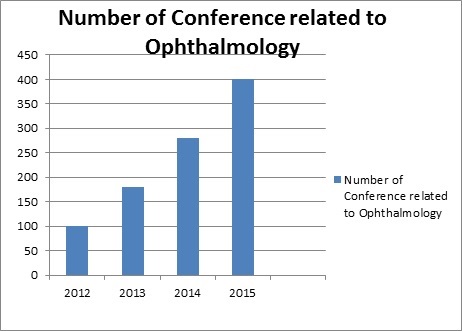
Fund Allotment to Ophthalmology Treatments and Research:
The Ophthalmology Department at Upstate Medical University has received a $110,000 unrestricted grant from Research to Prevent Blindness (RPB), bringing the department’s total amount of RPB funding to more than $2.6 million since 1998. In addition to RPB funding, Upstate’s Ophthalmology Department has attracted more than $22.7 million in peer-reviewed funding from the National Institutes of Health, National Science Foundation and other agencies and lists among its funding sources $1.2 million from the Grateful Patient campaign of the Upstate Medical University Foundation and $250,000 from the Lions Clubs of District
The NEI is operating under a continuing resolution (H. R. 2775/Public Law 113-46), which provides $195M to fund operations. $10M is allocated to Research Management Support, $24M to the Intramural Research Program, and $161M to Extramural Research.
Why Amsterdam, Netherlands ?
Amsterdam have sophisticated and clinically developed Ophthalmological treatment and provided a need for local regulatory authorities to quickly bring their processes and guidelines up to dated. Efforts toward regulatory collaboration to bridge the gap between different countries’ requirements are underway. This has led to a certain degree of convergence for regulatory principles and pathways while implementing local regulatory changes in a way that is compatible with local environments. The Statistical reports show that the % of people who are getting treated for ophthalmological treatments in Amsterdam comparing to all world is more, this makes Netherlands a most preferable destination for Ophthalmology Conference 2016.
Hospitals of Ophthalmology in Amsterdam:
University Medical Center Groningen
University Medical Center Utrecht
Leiden University Medical Center
University Medical Center St Radboud
Academic Hospital Maastricht
Erasmus MC
Free University Medical Center
Academic Medical Center

Major Associations around the Globe related to Ophthalmology in Europe:
American academy of Ophthalmology
Afro-Asian Council of Ophthalmology
All India Ophthalmological Society
Asia Pacific Academy of Ophthalmology
Canadian Ophthalmological Society
Chinese Ophthalmological Society
Canadian Ophthalmological Society
Danish Ophthalmological Society
European Society of Ophthalmology
French Society of Ophthalmology
German Ophthalmological Society
Italian Society of Ophthalmology
Japanese Ophthalmological Society
Korean Ophthalmological Society
Malaysian Society of Ophthalmology
Ophthalmological Society of South Africa
Ophthalmic Society Emirates Medical Association
Royal College of Ophthalmologists, United Kingdom
Saudi Ophthalmological Society
Major Associations related to Ophthalmology in Netherlands:
European Society of Ophthalmology
European Society of Retina Specialists
World Glaucoma Association
South East-European Association for Research in Vision and Ophthalmology
European Association of Eye Hospitals
The Netherlands Association for Research in Vision and Ophthalmology
European Society of Ophthalmic Plastic and Reconstructive Surgery
European Strabismological Association
Association of Ophthalmologists of Latvia
Belgisch Oftalmologisch Gezelschap - Société Belge d'Ophtalmologie
Berufsverband Augenärzte Deutschlands e.V. (BVA)
Cyprus Ophthalmological Society
Czech Society of Ophthalmology
Dansk Oftalmologisk Selskab
Deutsche Ophthalmologische Gesellschaft
Estonian Ophthalmological Society
Hellenic Ophthalmological Society
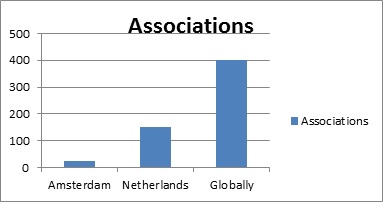
Target Audience:
Ophthalmologist, researchers, eye surgeons, physicians, eye care specialists, professors, scientific community, delegates and students are the main participants for the conference. Business professionals (Directors, presidents, CEO) from eye equipment companies.
Graphical Representation of the Target Audience:
Eye Surgeons/Doctors : 50%
Researcher/ Professors: 30%
Business/ Marketing Eye Equipments : 20 %
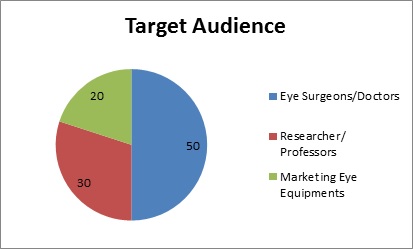
Major societies associated with ophthalmology are:
- Ireland Society of Cataract and Refractive Surgeons
- Asia Pacific Academy of Ophthalmology (APAO)
- Canadian Society of Refractive Surgery
- Japanese Society of Cataract and Refractive Surgery
- National Society for the Prevention of Blindness
- Vitreo Retina Society of IndiaGlaucoma Society of India
- Uveitis Society of IndiaOculoplastics Association of India
- Strabismological Society of India
Industries associated with ophthalmology:
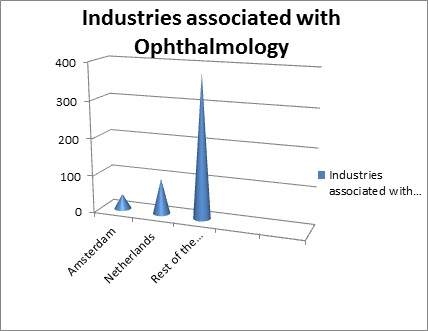
When it comes to ophthalmology industries USA leads the market followed byEurope. Some of the leading companies in ophthalmology market are listed below:
- Novartis
- AS Pharma Ltd
- Bausch & Lomb UK Ltd
- Baxter – Baxter International
- Baxter International
- Bayer plc
- Bayer plc (Diagnostics Division)
- Beacon Pharmaceuticals Ltd
- Clinisupplies Ltd
- Clonmel Healthcare Ltd
- Coloplast Ltd
Universities associated with ophthalmology in Amsterdam:
Amsterdam University College
Radboud University Nijmegen
Universiteit Leiden
Erasmus Universiteit Rotterdam
Delft University of Technology
Maastricht University
Technische University Eindhoven
Tilburg University
University of Utrecht
University of Amsterdam
University of Groningen
University of Twente
Vrije University Amsterdam
Wageningen University
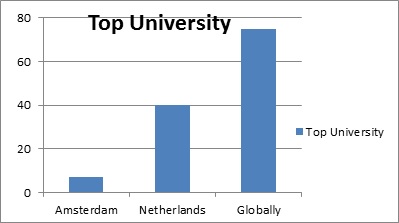
Glance at Market of Advertising and Marketing:
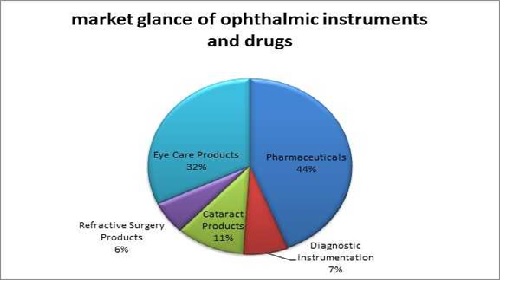
Changing trends in diet and lifestyle as well as increased long life are growing the market for ophthalmological treatments: the global ophthalmic device market is expected to reach $28 billion by 2016 exhibiting a 2.5% compound annual growth rate from 2009 to 2016, according to GBI Research.
“The worldwide ophthalmic products market beats $22 billion (US) and is rising at more than 10% per year. Without the supplement of consumer eye care products, the ophthalmic products market is coarsely a $17 billion market.” Rising of call for ophthalmic devices and increasing healthcare coverage in emerging economies will rise sales to 2024.The medical device market of Spain is mainly comprised of medical equipment’s such as consumables, orthopaedic devices, dental devices, respiratory devices, and ophthalmic devices which are manufactured in Germany, France, the UK, Italy and Spain. The demand for medical devices has been increasing owing to a growing awareness for early diagnosis and treatment of uncountable disease states in Japan. The key countries that have contributed significantly in developing medical devices market during 2008-2013 include Germany, UK, Spain and France. Germany is one of the chief medical instrument development markets and it has been observed that the country contributes immensely to the exports of medical devices.
The rise in growth curve in revenue of ophthalmic instruments and drugs will not only be seen in developed countries ,but also in developing countries like India,China,Brazil,South Korea and Russia in particular will see equally high revenue growth by 2024.
Statistics of Physicians, Researchers and Academicians working on ophthalmology:
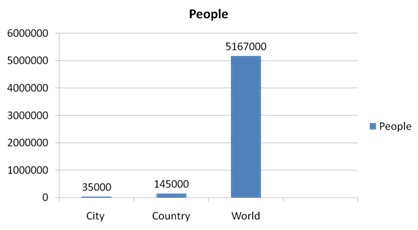
References:
http://www.nichigan.or.jp/english/hospital.jsp
https://en.wikipedia.org/wiki/List_of_university_hospitals
http://www.icoph.org/ophthalmologists-worldwide.html
http://www.prnewswire.com/news-releases/ophthalmic-devices-market-forecast-2014-2024-future-prospects-for-leading-companies-271870351.html
Conference Highlights
- Ophthalmology Surgery
- Ophthalmic Disorders
- Ocular Oncology
- Neuro Ophthomology
- Advanced Ophthalmological Care
- Cornea Disorders and Treatments
- Glaucoma
- Ocular Microbiology
- Pediatric Ophthalmology
- Optometry and Vision Science
- Retina & its Disorders
- Orbital Disorders
- Eye Floater and Vision
- Ophthalmic Drug Delivery
- Ophthalmology Practice
- Entrepreneurs Investment Meet
To share your views and research, please click here to register for the Conference.
To Collaborate Scientific Professionals around the World
| Conference Date | December 05-06, 2016 | ||
| Sponsors & Exhibitors |
|
||
| Speaker Opportunity Closed | Day 1 | Day 2 | |
| Poster Opportunity Closed | Click Here to View | ||
Useful Links
Special Issues
All accepted abstracts will be published in respective Our International Journals.
- Journal of Clinical & Experimental Ophthalmology
- International Journal of Ophthalmic Pathology
- Optometry : Open Access
Abstracts will be provided with Digital Object Identifier by



















